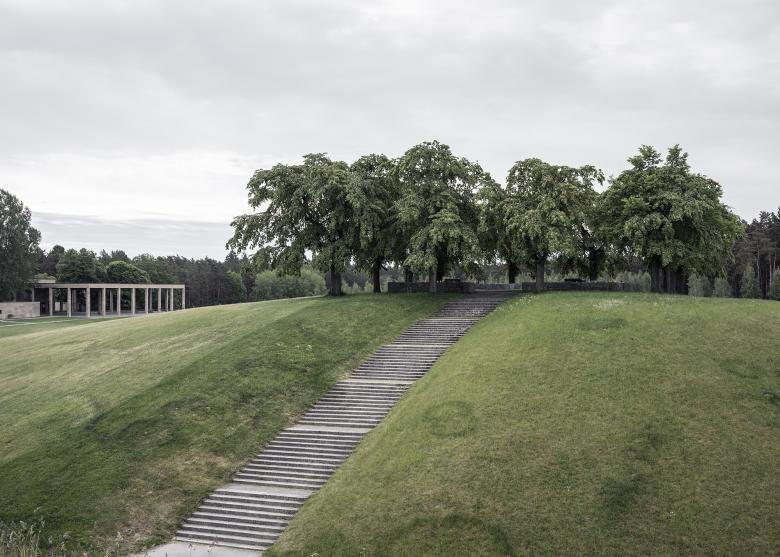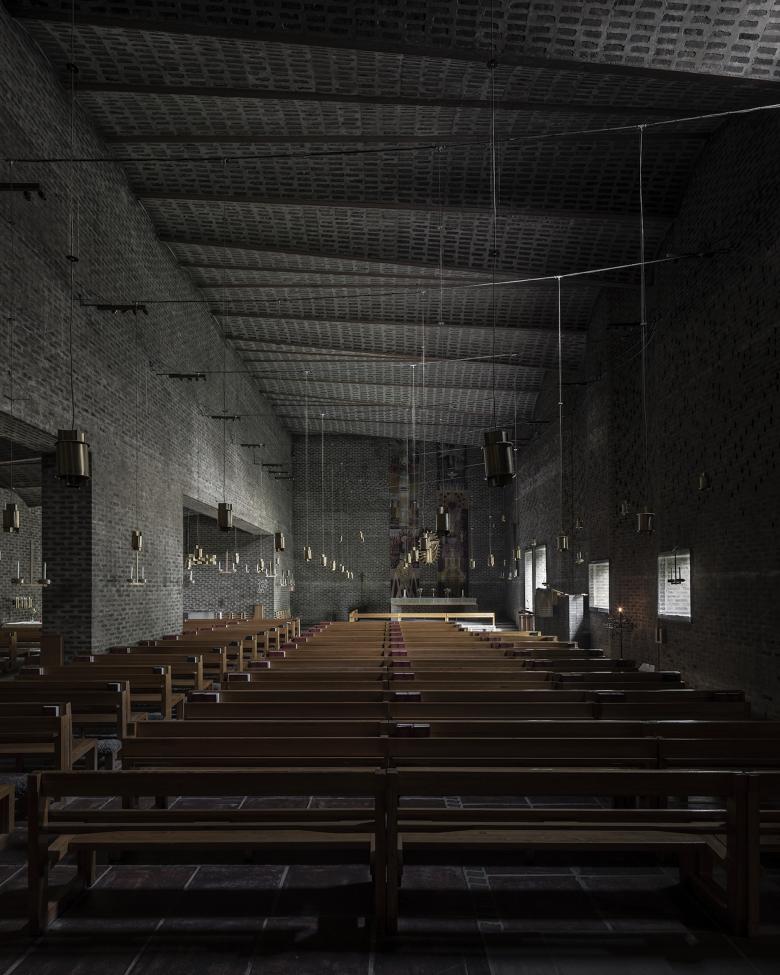A Missing Link
Stockholm’s ArkDes portrays the famous Swedish architect Sigurd Lewerentz (1885–1975) as the “Architect of death and life” in a major monographic exhibition that opened on October 1, 2021, and is on display until August 28, 2022. Ulf Meyer toured Sigurd Lewerentz: Architect of Death and Life and shares his thoughts on Lewerentz, his buildings and landscapes, and the exhibition.
When British architecture critic Kieran Long became director of ArkDes, Stockholm's center for architecture and design, in 2017, he decided to present one of Sweden's most famous modern architects, Sigurd Lewerentz, in a new light. Long commissioned a new photo series of Lewerentz’s best buildings and selected 800 drawings and objects, many of them unpublished, from the huge collection that slumbered in the archives of the museum. The exhibition that opened four years later, subtitled Architect of Death and Life, impressively shows Lewerentz’s diversity and brilliance, and arrives at just the right time. The show in Stockholm is the largest monographic exhibition ever to be seen at ArkDes and is helping to rewrite the history of modernism in Scandinavia. Organizing an exhibition about a "dead white man" is complicated these days; Long explains that it took a foreigner like himself to open the eyes of the Swedish public to a local hero, referring to the widespread aversion of Swedish society to heroes.
Lewerentz’s masterpieces, especially St. Mark‘s Church in Björkhagen and St. Peter’s Church in Klippan, are known and valued worldwide for their strict, distinctive architecture. Their coarse masonry and formal freedom combined with strict detailing appear radical and inventive in view of Northern Europe’s neoclassical traditions. Lewerentz’s oeuvre does not fit into the narrative of the pleasing, neat, or “sweet” Swedish culture. He refused to follow the mainstream of postwar architecture and offered creative resistance to the rational construction of modern Sweden as a welfare state. Lewerentz’s buildings of all sizes are diverse and inventive in their relationships between history and modernity, eternity and transience, community and loneliness, warmth and alienation.
His sometimes brooding and serious works are unconventional in construction and material, inspired by members of the Deutscher Werkbund such as Richard Riemerschmid, for whom he worked in Munich as a young man and in the National Romantic style in Scandinavia. Lewerentz is considered an enigmatic architect whose work is poetically and symbolically charged. It has drawn generations of architects under its spell. Since Lewerentz’s death in 1975, however, there has not been a comprehensive portrait of Sweden's most interesting, stubborn and distinguished 20th-century architect.
Lewerentz’s pioneering churches and cemeteries have been analyzed repeatedly, but Long is introducing Lewerentz’s contributions to “urban life in the modern metropolis” for the first time, hence the title of the show. Long celebrated as the “architect of death” alone, Lewerentz also contributed to rethinking Stockholm as a modern metropolis. Still, by Swedish standards it is unusual that Lewerentz refused to accept the welfare state as a client; he did not design a single apartment for the state housing program.
For London architect Adam Caruso, who designed the exhibition on Skeppsholmen Island in a sensible and powerful way, “Lewerentz forces us into a permanent confrontation with the condition of our existence.” That is an achievement and a burden at the same time. An interesting turning point and late onset of modernity was the Stockholm Exhibition of 1930, for which Lewerentz designed unique items for everyday life, consumption, and street life.
ArkDes director Kieran Long gives a tour of Sigurd Lewerentz: Architect of Death and Life.
The massive National Insurance Board office building in Stockholm, built by Lewerentz in 1932, was extensively restored recently. Some interiors were recreated in detail, and furniture and clocks were painstakingly restored — an impressive expression of the new appreciation for Lewerentz’s work, which refused to be classified into stylistic categories and largely was without precedent. Lewerentz was neither a pure classicist as a young man, nor a pure modernist as an older man. His magnum opus, Skogskyrkogården (The Woodland Cemetery, designed together with Gunnar Asplund) in Stockholm, on which Lewerrentz worked for decades, is now a UNESCO World Heritage Site. In a largely agnostic country like Sweden, the design of the landscapes and buildings offers precious space for reflection. Lewerentz’s work thus stands for “a symbolic connection between life and death,” in the words of Demetri Porphyrios, an architect passionate about classical architecture. The Resurrection Chapel at Woodland was, he continues, “an expression of a critical tension with classical architecture.” This tension remained unresolved throughout his life; the juxtaposition of classicism, Christianity, and social democracy was permanent.
Lewerentz’s best buildings derive their strength from their materiality and sometimes gloomy atmospheres. As simultaneously a craftsman and a thinker, he struggled with a construction industry that paid little attention to details and was more interested in efficiency. Lewerentz, on the other hand, was looking for subtle transitions between landscape and building, outside and inside, or wall and roof. His architecture was quiet, never polemical or political, with a focus on sensorial and spatial effects. Lewerentz was obsessed with his work, his ideas could change radically, and he always worked on several solutions in parallel. It was not easy for Lewerentz to specify his ideas; the designs were the result of his long and lonely struggle at the drawing table, the constant revisions making colleagues nervous. Only in this way was he able to work on all scales, cultivate his love of detail, and overcome typologies and clichés. Every project was charged with the same curiosity.
The reduced material palette of his churches resulted in spaces that recall the original idea of the church, rather than citing prototypical sacred spaces through architectural history. The symbolic order he gave burial places skillfully mixed forms of Christianity with older Nordic traditions. Architect of Death and Life expands the picture of Lewerentz's life and work. It highlights the architect’s connections between traditional and modern appearances, and his ambivalent attitude to technology. Despite his training as an engineer, technology and symbolism were not mutually exclusive in his mind. Rather, he gave space to the deepest, existential moments: death and remembrance, religion and burial.
The exhibition also sees itself as a turning point in the museum's mediation of architecture, as a “material turn” and a return to archival research. It aims to present buildings as places of artistic importance rather than “symptoms of political currents,” as Long writes in the extensive catalog. In his focus on human needs that were not rational, Lewerentz represents a different modern age in Sweden.






